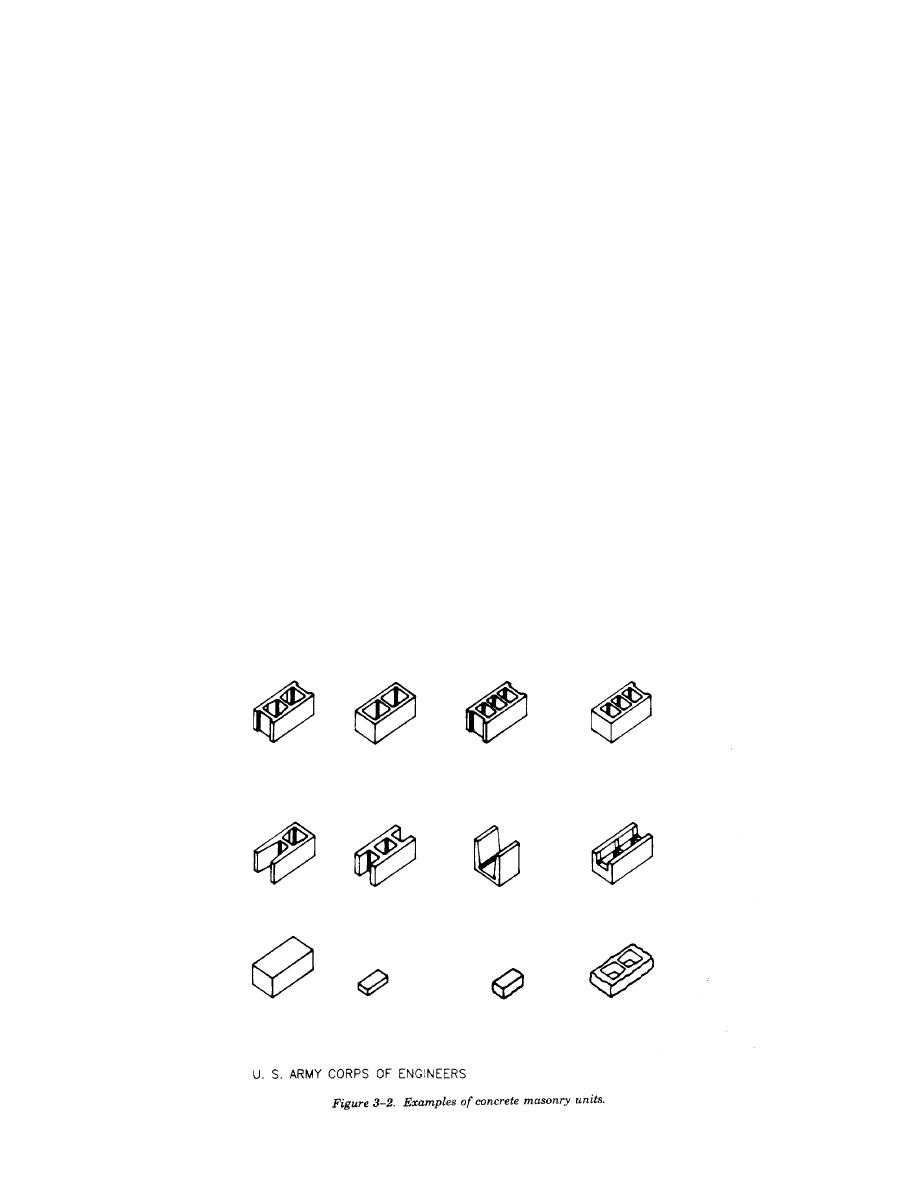
TM 5-809-3/NAVFAC DM-2.9/AFM 88-3, Chap. 3
units are typically 15e inches long; either 7e
suitable for use in concrete such as coloring pig-
inches or 3e inches high; and 7e inches, 5e
ments, ground silica, etc., may also be used.
inches, or 3e inches wide. Nominal widths up to
b. Manufacturing process. Concrete masonry
units are cast using no slump concrete. The mixture
16 inches are also available in many areas. The
is placed into molds and vibrated under pressure for
walls of most hollow concrete units taper or are
a specified time to obtain compaction. Higher
flared and thicker on one bed surface of the unit
strength units can be obtained by subjecting the
than the other to enable release from the mold
material to longer vibration and compaction
during production. Hence, the net concrete cross-
periods. The units are removed from the molds and
sectional area may be greater on the top of the unit
may be cured under normal atmospheric conditions,
than the bottom. For structural reasons, ASTM C
or by autoclaving (steam curing).
90 stipulates minimum wall thickness for load-
c. Size and shape. Concrete masonry units are
bearing concrete masonry units.
d. Visual properties. Color other than the nor-
available in a wide variety of sizes and shapes as
shown in figure 3-2. They may be classified as
mal concrete gray may be obtained for concrete
hollow or solid.
units by adding pigments into the mix at the time of
(1) A solid unit is defined in ASTM C 90 as
manufacture or by painting after installation. A
having a net area not less than 75 percent of the
variety of surface effects are possible including
gross area. A type of unit known as concrete
smooth face, rough (split) face, and fluted, ribbed,
building brick, ASTM C 55, is available which is
recessed, angular and curved faces, some of which
completely solid. Solid units are typically 7e
may affect cross-sectional area calculations.
e. Classifications. Concrete masonry units are
inches high and are available in several lengths and
widths. Concrete bricks are normally 3e inches
classified according to moisture content require-
wide, 2 inches high and 7e inches or 15e inches
ments. The two types of moisture controlled units
long.
are:
(2) A hollow unit is defined in ASTM C 90 as
(1) Type I, Moisture-Controlled Units, which
having face shell and web thicknesses which con-
must conform to the appropriate ASTM moisture
form to the requirements listed in Table 2 of the C
content requirements.
90 standard. Most hollow concrete masonry units
(2) Type II, Nonmoisture-Controlled Units,
range from 50 to 70 percent of the gross area,
which have no moisture control requirements.
f. Material properties. The material properties
depending on such factors as: unit width, wall (face
shell and web) thickness, and core shape. Hollow
3-3


 Previous Page
Previous Page
